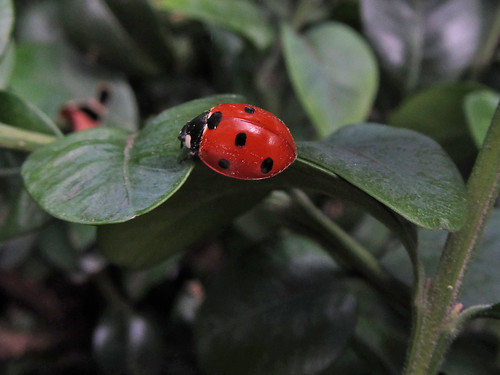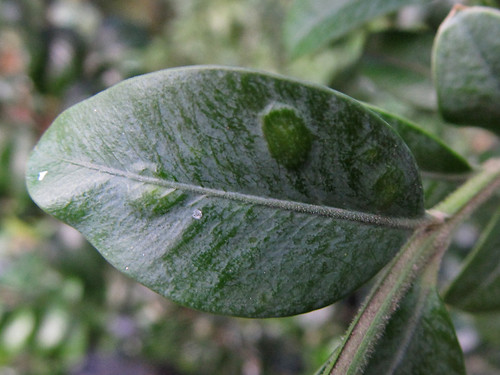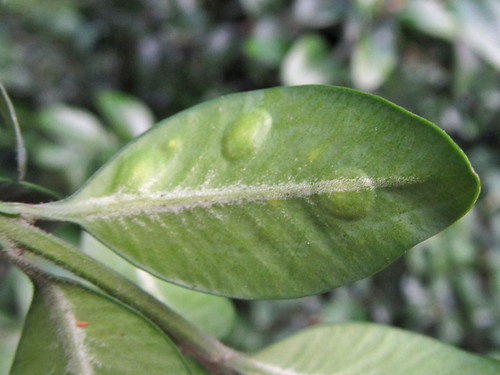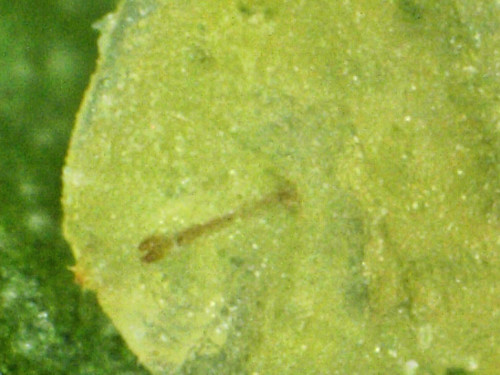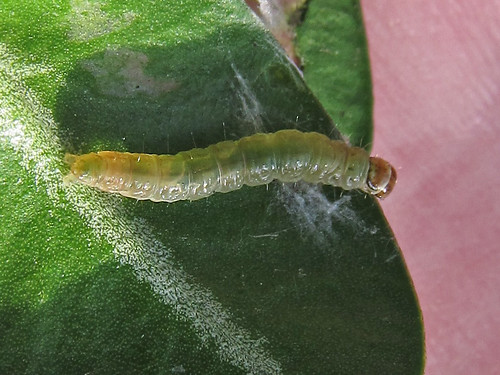I've now participated in the New Year Plant Hunt for three years running. Last year I wrote it up on the
Maps Matter blog disguised as a piece on the locations of lamp posts, but I thought it was time to find a space for my pure natural history posts. So this is the first (proper) post of a new blog.
I have moved some old articles here, concerned with plants and insects I've found at Attenborough Nature Reserve and on the Jubilee Campus of Nottingham University. I'll probably also try and write some retrospective posts covering Bioblitzes, and guided walks I've led.
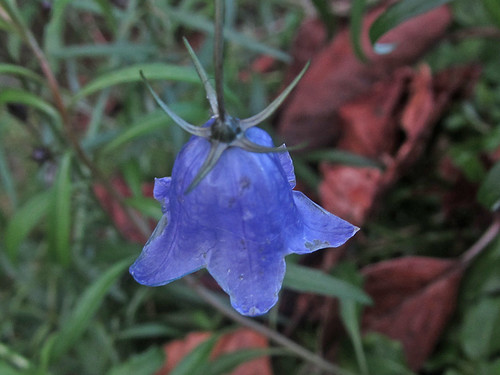 |
| Harebell, Jubilee Campus, Nottingham |
Links on English Names are to photos on Flickr, those on Scientific Names are to wikipedia, which might help readers to find information in their own language. Most photos were taken on 5th January in better light.
The map below shows my records for this year (in blue) and for previous years (2014 primrose, 2013 plum), and the route I took this year.
See full screen
There's no need for a detailed account of my plant hunt. However, this year I extended the route in 3 places:
- Roadside verges which had been productive in previous years have been re-turfed, so I walked a much longer section of dual carriageway to try and find flowers. This also allowed me a minor diversion to pick up a flowering Cow Parsley Anthriscus sylvestris, which I'd noticed on Christmas Day.
- Queen's Medical Centre. I added this section because I discovered a Gorse (Ulex europeaus) bush just a couple of days after the end of the 2014 hunt. This also allowed me to walk through a car park which had a reasonable chance of some good ruderal plants.
- Added an extra section along the Leen in Radford. This was really done because I found Blue Fleabane (Erigeron acer) in flower here in January 2013, and I thought it would be a nice find for the Plant Hunt.
To my surprise these additions made the total route, the better part of 6 miles, 10 kilometres, plus I walked an additional 2.5 kilometres where I was not recording. I actually split it over two days because my chest was suffering after an hour-and-a-half. On New Year's Day the light was poor and it was damp, the following day was better.
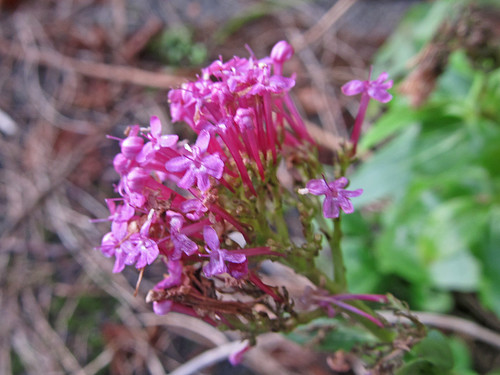 |
Red Valerian, St Mary's Churchyard
Prolifically self-seeds on gravel next to the church.
The churchyard was not heavily managed for a number of years
and now has a rich flora and many interesting fungi, including several Waxcaps. |
It was already obvious before Christmas that this year's total would be down on last years. There was nothing in the garden, some great verges had gone, and lots of places had been mowed in November. Then we had 3-4 inches of snow on Boxing Day which was still lying on the ground on New Year's Day morning. In fact I delayed setting off so that I would not have to be searching through patches of snow.
 |
A hoped-for ever present, Daisy Bellis perennis.
St. Mary's Churchyard Wollaton Park |
|
I don't think any of finds were surprises (at least to me). Not least because this is my local patch and I was noticing unseasonal flowering for years before the New Year Plant Hunt persuaded to start recording things properly.
I had several new species from last year, ,at least in part because I changed the route to find them: Cow Parsley, Gorse, and Hogweed (
Heracleum sphondylium). Also new were two
Sisymbrium species: Hedge Mustard (
Sisymbrium officinale), and one which I'm not absolutely certain about, but think is most likely to be
Sysymbrium loeslii, False London Rocket. The latter has a curious distribution in Nottingham, probably as a result of being introduced by Boots for a cosmetic of pharmaceutical product.
My most productive area is a combined verge and moat alongside buildings in the Jubilee Campus. The verge does get mown but not too frequently and sustains a fascinating mix of plants throughout the year, including Bee Orchids (
Ophrys apifera), and some unusual plants (Sticky Catchfly
Silene viscara, an unidentified
Thyme, Tunic Flower
Petroraghia saxatalis) which I think are escapes from the green roofs above. Here I found plenty of Harebell
Campanula rotundifolia, a
Leucanthemum (probably
superbum, Shasta Daisy,
as there is a small patch of them at this location), Yarrow
Achillea millefolium, Wild Marjoram
Origanum vulgare, and a solitary Red Clover
Trifolium pratense. Absent from this location this year was Smooth Hawk's-beard,
Crepis capillaris. New was Soft Rush,
Juncus effusus.
 |
| Marsh Marigold, Jubilee Campus |
An ever present in the moats are many flowering Marsh-marigold
Caltha palustris. My theory is that as the moats get cut-back in late summer, early autumn, this encourages a second bout of flowering. I haven't checked, but I think the same plants flower again in the spring. The water in the moats may be quite a bit warmer as they form part of the heat pump system used by the buildings.
 |
| Syrphid, possibly Episyrphus balteatus, on Marsh Marigold |
Of course there's always one plant which one only notices afterwards. This year it was Hairy Bittercress
Cardamine hirsuta. Noted today, 5th January.
 |
| The one that got away. |
My final list was 32 species:
- 17 on Jan 1st, Cerastium fontanum, Ulex europaeus, Arrhenatherum elatius, Senecio squalidus, Veronica persica (*), Capsella bursa-pastoris (*), Senecio vulgaris, Hordeum murinum, Bellis perennis (*), Sisymbrium loeslii (More checking needed), Taraxacum officinale agg. (*), Centranthus ruber, Poa annua (*), Euphorbia peplus (*), Stellaria media (*), Arabidopsis thaliana, and Anthriscus sylvestris;
- on Jan 2nd, another 15, Caltha palustris, Achillea millefolium, Sonchus asper, Heracleum sphondylium, Sisymbrium officinale, Campanula rotundifolia, Urtica dioica, Corylus avellana, Senecio jacobaea, Leucanthemum superbum, Juncus effusus, Trifolium pratense, Origanum vulgare, Lamium album, and Alnus incana. (An asterisk indicates seen on both days, those in bold not seen last year).
This was only a few short of the total 2 days later in
Leicester. Two big differences can be noted: I covered a lot more ground in a broader range of habitats, and I had perhaps 10 more unusual plants which I expected to find on the 'patch'. In warmer years the ruderal habitats where the Leicester survey concentrated are probably much richer in diversity, but they equally may be more vulnerable to loss of flowers in cold weather.
Mowing & 'Tidyness': enemies of Wild Flowers
Our experience in Leicester showed how much the weather affects the number of flowers to be found, but for me there was another factor: later mowing of grass in the autumn and much more 'tidying up'. Both the local council & the University of Nottingham seem to be much more active. Here are a few examples of places where I might have found flowers a couple of years ago, but which have been brutalised since.
 |
New turf replaced a verge rich in wild flowers (see below).
Unnecessary 'beautification' as part of road widening. The verge will probably develop the same flora fairly quickly.
This year all I found was Poa annua. |
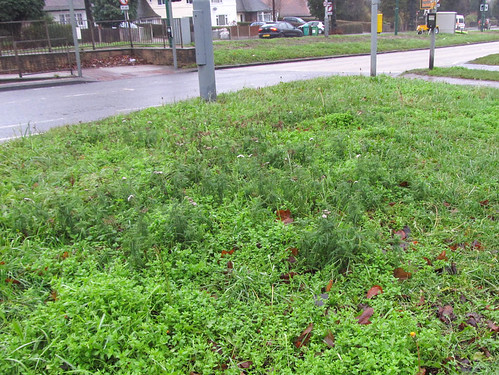 |
| The same verge, New Year's Day 2014. Source of at least 5 flowering plants. |
 |
Residential service road, Derby Road, Nottingham
The lower part of these banks are not mown, rather they are scraped.
In the past I've found Buttercups, Dead-nettles, Chenopods, Knot-grass, Cow Parsley and others along here
In the Spring the Cow Parsley is as prolific as along a country lane, but soon gets cut back. It interferes with no-one. |
A Note about the Map
Anyone who reads my
Maps Matter blog knows that I'm at least as obsessed by maps as I am by plants, plant galls, and insects. The map showing my routes and finds for the last 3 years was built on a very useful website called Umap which was created by the OpenStreetMap France community. I simply imported some GPS traces and KML (Google Earth) files of my finds (I record on my mobile phone using ObsMapp and upload data to Observado, which works fine for short trips). Rob Nickerson has
written a useful note about how to use Umap, I anticipate they might be useful for botanists too.
